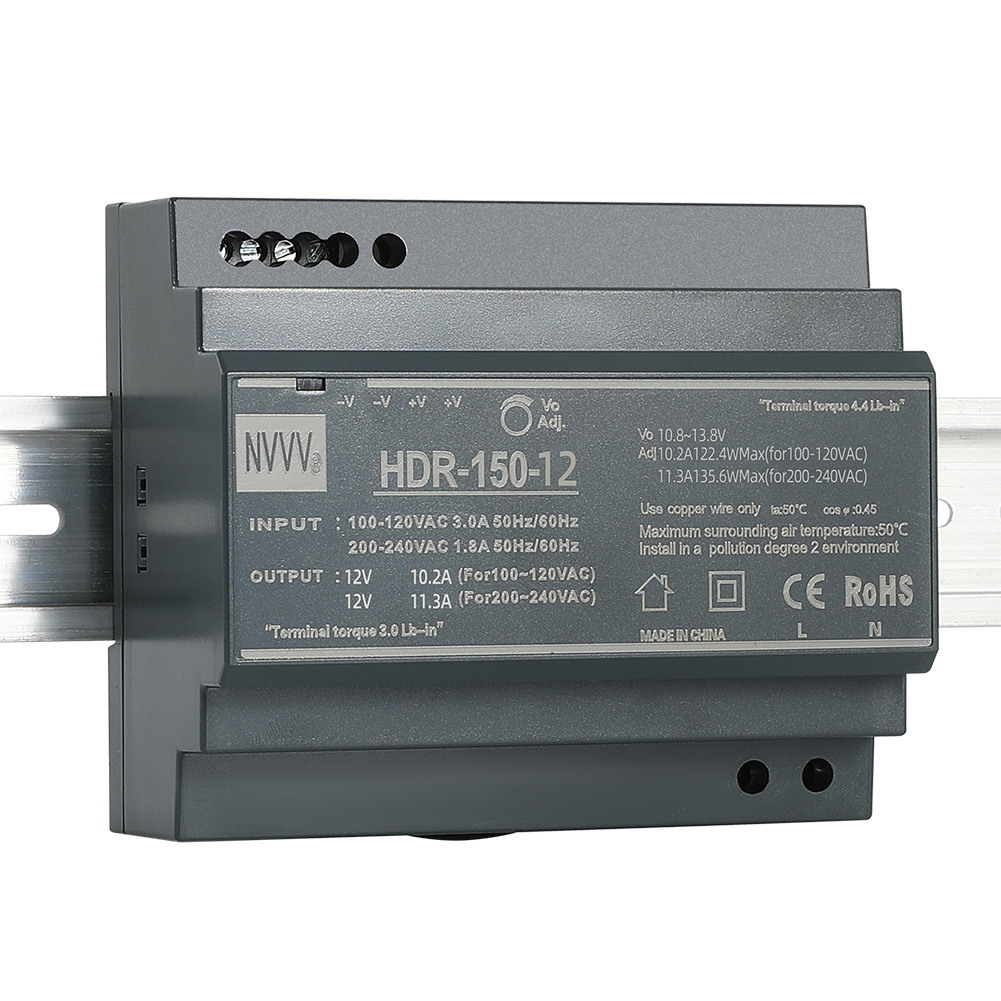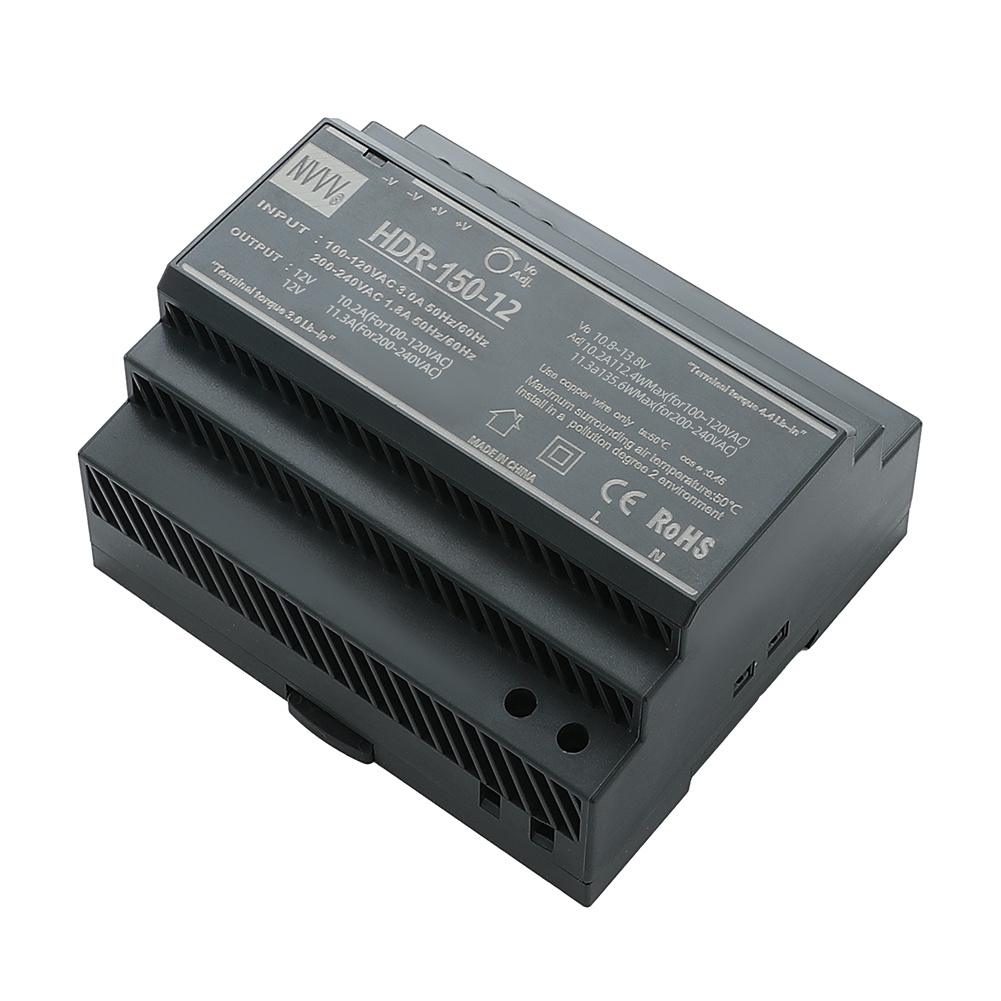What is the difference between switching power supply and linear regulated power supply?
In the design and application of electronic equipment, power supply is a crucial component. Switching Mode Power Supply (SMPS) and linear regulated power supply (Regulated Power Supply) are two common power supply types. They have significant differences in working principles, efficiency, volume, and application scenarios. This article will explore in detail the differences between switching power supplies and linear regulated power supplies.
1. Basic principles
1.1 Working principle of switching power supply
Switching power supplies convert the input voltage into the required output voltage through high-frequency switching devices such as MOSFETs. Its basic workflow is as follows:
1. Rectification and filtering: First, the AC input voltage (AC) is rectified and filtered to obtain a direct current voltage (DC).
2. High-frequency switch: Use high-frequency switching devices to convert DC voltage into high-frequency pulse voltage.
3. Transformation and rectification: The high-frequency pulse voltage is converted into the required voltage through a transformer, and then rectified and filtered again to obtain a stable DC output voltage.
4. Feedback control: Use feedback circuits to monitor the output voltage and adjust the working cycle of the switching device to maintain the stability of the output voltage.
Switching power supplies are widely used in computers, communication equipment, industrial control and other fields because of their high efficiency and small size.
1.2 Working principle of linear regulated power supply
The linear regulated power supply achieves voltage regulation by adjusting the voltage drop. Its basic working process is as follows:
1. Transformation and rectification: Reduce the AC input voltage (AC) through the transformer to close to the required output voltage, and then rectify and filter it to obtain the DC voltage (DC).
2. Linear adjustment: Use linear adjustment components (such as transistors) to adjust the voltage difference between the input voltage and the output voltage, and consume the excess energy in the form of heat to achieve stability of the output voltage.
3. Feedback control: Use feedback circuits to monitor the output voltage and adjust the working status of the linear adjustment components to maintain the stability of the output voltage.
Because of its low noise and high stability, linear regulated power supplies are widely used in audio equipment, laboratory instruments and other occasions that require low-noise power supply.
2. Performance comparison
2.1 Efficiency
Switching power supplies generally have higher efficiencies, typically between 80% and 90%. This is because switching power supplies operate through high-frequency switching and have lower energy losses. The efficiency of linear regulated power supplies is lower, usually between 50% and 60%. The reason is that the linear regulated power supply achieves voltage regulation by adjusting the voltage drop, and the remaining energy is consumed in the form of heat, resulting in energy waste.
2.2 Volume and weight
Due to the application of high-frequency switching technology, the transformers and filters in the switching power supply can be made very small. Therefore, the switching power supply has a smaller size and weight and is suitable for applications where space is limited. In contrast, the transformers and heat sinks in linear regulated power supplies are usually larger, resulting in larger size and weight that make them unsuitable for portable equipment.
2.3 Noise and ripple
Switch mode power supply will produce electromagnetic interference (EMI) and high-frequency noise during the high-frequency switching process. These noises need to be reduced through filtering and shielding. The linear regulated power supply has lower noise and ripple because there is no high-frequency switching process, making it suitable for applications that are sensitive to power supply noise.
2.4 Thermal management
Due to their higher efficiency, switching power supplies generate less heat and therefore have lower heat dissipation requirements. Linear regulated power supplies are less efficient, generate more heat, and require larger radiators to dissipate heat. Thermal management is an important consideration in their design.
3. Application scenarios
3.1 Application of switching power supply
Due to its high efficiency, small size and light weight, switching power supplies are widely used in the following fields:
1. Computers and communication equipment: Switching power supply is the main power source for computers, routers, switches and other equipment, providing stable DC voltage.
2. Industrial control: Switching power supplies are widely used in industrial automation and control systems to provide reliable power supply.
3. Household appliances: Switching power supplies are also widely used in household appliances such as televisions, stereos, and microwave ovens.
4. Portable devices: Due to their small size and light weight, switching power supplies are widely used in portable devices such as mobile phones and tablet computers.
3.2 Application of linear regulated power supply
Linear regulated power supplies are widely used in the following fields because of their low noise and high stability:
1. Audio equipment: In high-fidelity sound systems and audio amplifiers, linear regulated power supplies provide low-noise power to ensure sound quality.
2. Laboratory instruments: Among laboratory instruments and test equipment that require high-precision and low-noise power supplies, linear regulated power supplies are the first choice.
3. Medical equipment: Medical equipment with high requirements on power supply noise and stability, such as electrocardiographs, ultrasound equipment, etc., also use linear regulated power supplies.4. Low-power devices: In applications with low power requirements, such as small sensors, low-power microcontrollers, etc., linear regulated power supplies are widely used because of their simplicity and stability.
4. Future development trends
4.1 Development Trend of Switching Power Supply
As technology advances, switching power supplies continue to evolve in performance and applications. Future development trends include:
1. Higher efficiency: By improving switching technology and materials, the efficiency of switching power supplies can be further improved and energy waste reduced.
2. Smaller size: By using higher frequency switching technology and integrated design, the size and weight of the switching power supply are further reduced.
3. Intelligent control: Introduce digital control technology to realize intelligent power management and optimization, providing more efficient and stable power supply.
4. Environmentally friendly design: Consider environmental protection factors in the design, adopt lead-free, low-energy consumption design, and comply with environmental protection requirements.
4.2 Development Trend of Linear Stabilized Power Supply
Although switching power supplies dominate many applications, linear regulated power supplies still have important applications in some specific areas. Future development trends include:
1. Low noise design: further reduce the noise and ripple of the linear regulated power supply to meet applications with higher power supply noise requirements.
2. High-precision voltage stabilization: Improve voltage stabilization accuracy and response speed to meet the needs of high-precision electronic equipment.
3. Integration and miniaturization: Through integrated circuit technology, a smaller linear regulated power supply can be realized to meet the needs of portable devices.
4. Energy-saving design: Optimize power efficiency, reduce energy consumption and heat generation, and improve overall performance.
Summary
There are significant differences between switching power supplies and linear regulated power supplies in terms of working principles, efficiency, volume, noise and application scenarios. Switched mode power supply is widely used in computers, communication equipment, industrial control and portable equipment due to its high efficiency, small size and light weight. Linear regulated power supplies are widely used in audio equipment, laboratory instruments, medical equipment and low-power equipment because of their low noise and high stability.
In the future, with the continuous advancement of technology, switching power supplies and linear regulated power supplies will continue to develop in their respective application fields. Switching power supplies will develop towards higher efficiency, smaller size, intelligent and environmentally friendly design; while linear regulated power supplies will further reduce noise, improve accuracy, achieve miniaturization and energy-saving design to meet the needs of specific applications.
By understanding the differences and application scenarios between switching power supplies and linear regulated power supplies, engineers and designers can choose the appropriate power supply type according to actual needs, thereby optimizing the performance and reliability of electronic equipment. Today, with the rapid development of electronic technology, innovation and progress in power supply technology will continue to promote the development of various industries and bring more convenience and surprises to our lives.









